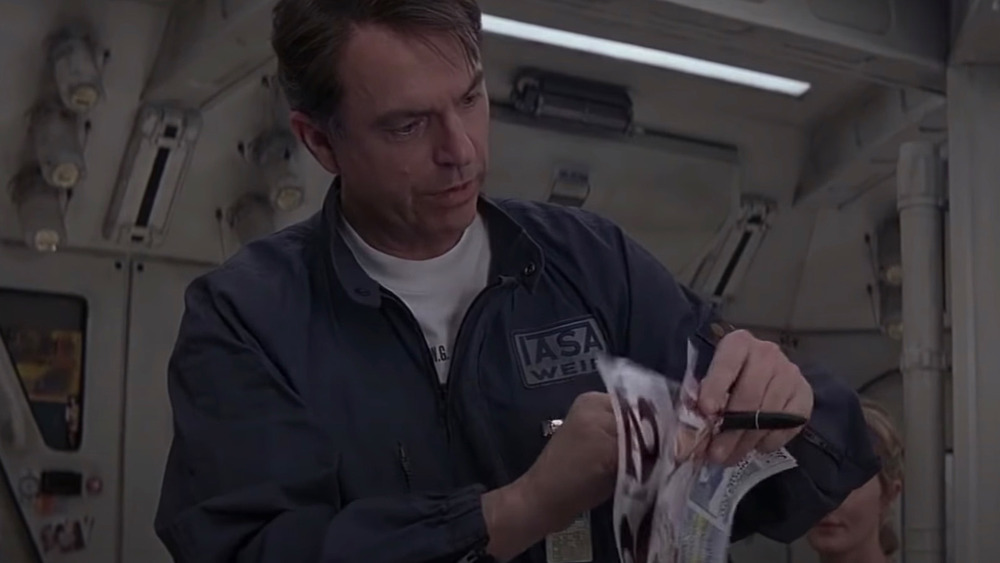The Event Horizon Reference You Never Noticed In Interstellar
Movies are never made in a vacuum. During development and production, filmmakers are often aware of films from the same genre that came before and made their own project possible. They'll often even include small nods to the works that inspired them. Or, sometimes they'll go ahead and "borrow" an idea from an earlier film without changing much. In another context, it might look like plagiarism, but in the movies, this is called "homage."
On the surface, Event Horizon and Interstellar don't have much in common beyond the fact that they're both science fiction films set in outer space. Event Horizon came out in 1997, and it's really a sci-fi/horror hybrid. It follows the crew of a ship sent to investigate the mysterious reappearance of the Event Horizon, a vessel with an experimental gravity drive that can quickly traverse space. Problem is, the Event Horizon also opened up a portal to another dimension that's a lot like hell. The ship's otherworldly powers make the crew members turn on each other and it becomes a bloodbath.
Interstellar, meanwhile, came out in 2014. Directed by Christopher Nolan and based on a script by Christopher and Jonathan Nolan, it's much closer to the "hard sci-fi" end of the spectrum. It's set in a time when planet Earth is nearly uninhabitable and science is searching for a new planet that can sustain human life. When a mysterious wormhole opens up near Saturn, NASA discovers that it leads to a new galaxy with twelve candidates for New Earth.
Despite their differences, both movies deal with the same subject: inter-dimensional time travel using wormholes. It's an esoteric concept for most audience members to grasp. But when Interstellar needed to explain how wormholes work, Event Horizon had the answer.
The Interstellar moment that gave Event Horizon fans deja vu
Near the beginning of Event Horizon, Dr. Weir explains how wormholes work to the crew of the Lewis & Clark, the ship sent to salvage the Event Horizon. A wormhole is essentially a shortcut in the space-time continuum that allows ships to travel across large distances instantly. That still sounds confusing to the crew, so the doctor then does a handy demonstration. He holds up a poster representing the space-time continuum, folds it in half, and punches a hole in both halves with a pen. That hole represents a wormhole, and when the pen passes through it, it simulates how the Event Horizon can jump across space and time. It's one of the most memorable scenes in the movie, and it's still one of the clearest explanations of how wormholes work.
So, when Interstellar needed to refresh the audience's memory about how wormholes work, folks on Reddit noted that it used the exact same demonstration. Shortly after the Endurance arrives, Dr. Romilly (David Gyasi) briefs Cooper (Matthew McConaughey) on the wormhole with the help of a folded piece of paper and a pen.
In fairness to Interstellar, is there really a better way to explain wormholes to a mass audience than the way Event Horizon already did it? Even the Nolan brothers couldn't top Event Horizon screenwriter Philip Eisner on this one.
The bigger question is, how did Cooper become a full-fledged NASA pilot without knowing what a wormhole was? Hasn't he seen Event Horizon?

